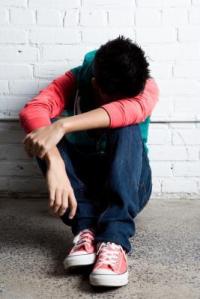
Original publication in The South Pasadena Review, “A Stone’s Throw” Column, September 11, 2014
A few weeks ago, our community sighed in relief having averted a potential school shooting. But after the relief, comes reality. This scary scenario points to wounds that not only exist in our city, but among many teens around the US.
I don’t know why the arrested boys planned an attack on the high school; and I’m not going to guess. But this does make me wonder about the stress many teens face: mounting schoolwork, social pressures and complexities, home life, bullying, anger, depression, suicidal thoughts…
Consider some statistics from the National Institute of Mental Health:
– About 11 percent of adolescents have a depressive disorder by age 18.
– Suicide is the second leading cause of death for ages 10-24.
– More teenagers and young adults die from suicide than from cancer, heart disease, AIDS, birth defects, stroke, pneumonia, influenza, and chronic lung disease, combined.
Sometimes a teen’s problem may solely be a chemical imbalance; but often it’s combined with social factors or simply social-emotional.
“Every teen wants to be connected. Clearly, these teens [the arrested boys] did not feel connected to their community,” states Natasha Prime, Special Education Counselor at South Pasadena High School and founder/Executive Director of “The Place,” a teen center in South Pasadena.
Prime adds, “Lots of kids not associated with traditional school activities (like band or sports) can still be a part of a group. [At “The Place”] they have somewhere to go, a place to belong and be connected.”
Elizabeth Haeger, South Pasadena’s Young Life staff associate, shares from the book Hurt by Dr. Chap Clark, “The average American teenager has less than 2 minutes a day of meaningful, personal interaction with an adult, including their own parents.”
Haeger adds, “As someone who spends a lot of time with teenagers, I can tell you, a lot of kids are in a darker place than many adults realize… They feel hopeless and unknown.”
When I was a teen, I remember being verbally ridiculed by other kids for things like: my name, using a tissue for my nose, winning a contest, and reading a book in the “wrong” spot – all innocuous things. I’m sure kids have to endure far worse! But what made a difference for me was a considerate adult or a thoughtful and apt word from a peer.
Whether or not an unpleasant interaction is “deserved,” many kids (and might I add, adults) can be cruel. For some, it takes one incident and the internal damage is done. For others, decades of abuse can render one to believe they are unworthy; but they can still emerge as decent human beings.
It is not our job to determine what result a mean word or action will have on a person. Rather, it’s everyone’s civil duty and common decency to treat others with respect. Yes, be respectful even to the one causing the pain, without giving them the power to continue the venomous hate that really just makes them miserable people.
Those who harm verbally or physically need to be held accountable for the part they play (by calling them on it or bringing in professionals.) And hopefully, that will help them take a step toward betterment. No one is beyond help.
But before a person starts down the wrong path, each individual around them can make a difference. It’s easy to say or do a mean thing or judge a situation quickly. What’s infinitely more challenging is to go beyond instinct and replace the mean word or action with a gentle, sincere and healing one.
Go even further and be fierce in caring for people. Go up to someone who was just handed a blow and pepper them with a kind truth. The irony is: the one who hurts the most is the one who spreads the hurt. So be a person who intervenes and stops that cycle.
I don’t say these things because I am this ideal caring person. I write this because I sometimes judge and spew venom (if only in my head and spilling out at times). But with the help of God and good friends, I must strive for better. And I’m guessing, no matter where we are on the care meter, we can all make improvements here.
I was angry with the two boys who were arrested because they allegedly meant to inflict serious harm. But then the anger turned to sympathy for us all: the boys, their families, those who can help prevent tragedies and those who are still being victimized.
The problem was thwarted but the pain persists. Are you the one causing pain? Are you the one taking it? (Don’t give up on seeking help, you will find it!) Are you the one watching it happen all around and doing little to nothing about it? All of us can probably answer “yes” to each.
The true tragedy would be moving forward like nothing ever happened. We can all take a moment to creatively imagine what can be done to turn a community-wide scare into a more healing future. We can recognize the underlying pain that exists all around and do something about it.
Resources to connect teens to peer communities and people who care:
http://www.theplaceofsouthpas.org (a safe place after school for 13-18 year olds)
http://www.greaterpasadena.younglife.org (Wyldlife is for those in middle school and Young Life is for high school students. YoungLife and WyldLife groups meet in various cities. Meetings are a fun, energetic and thoughtful place for teens.)